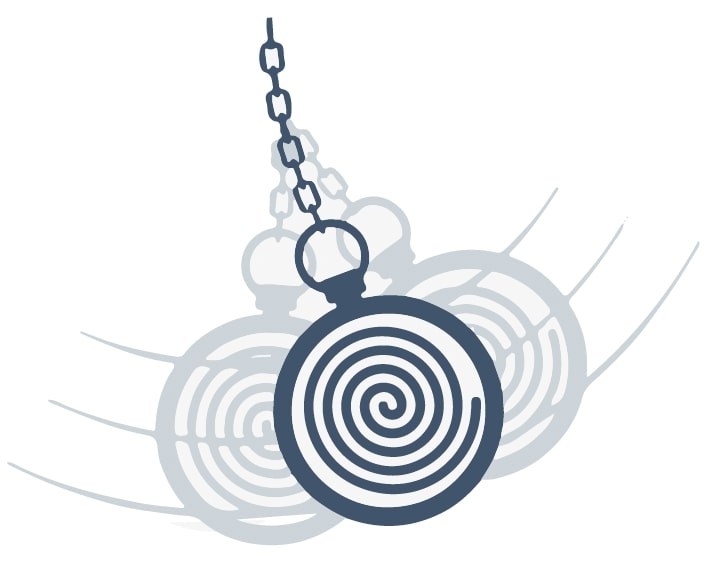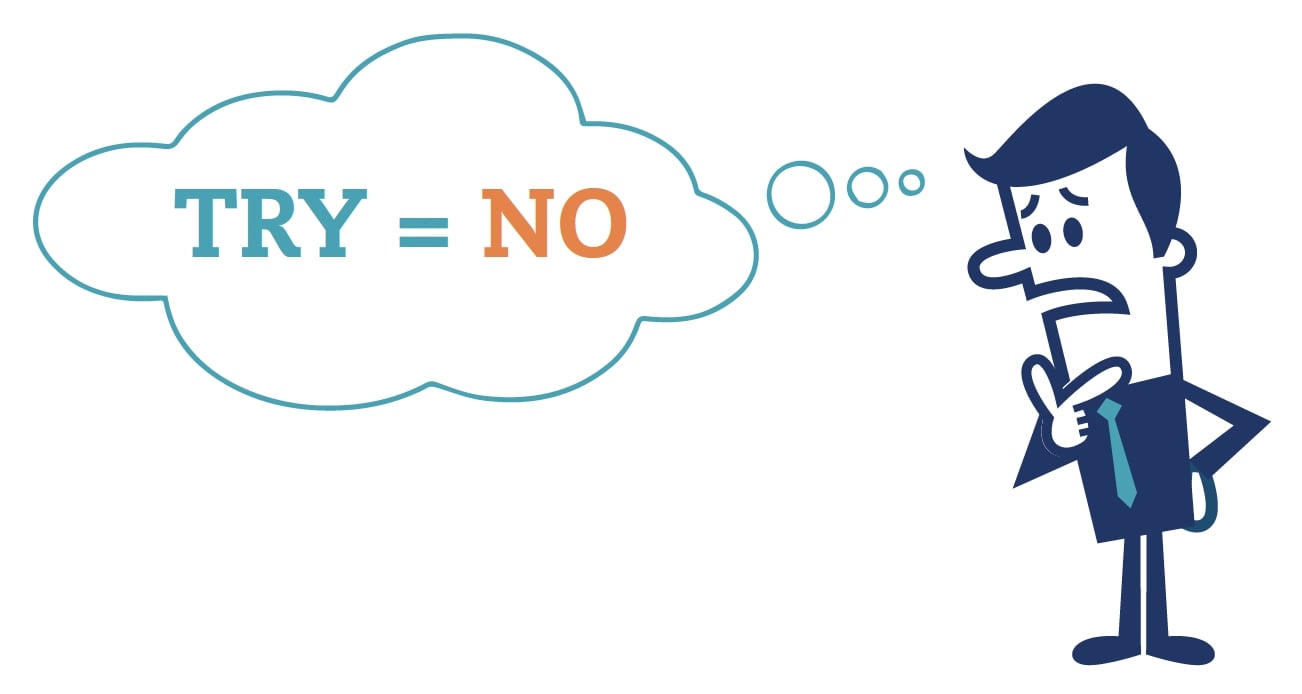Sometimes the use of a single word can drastically reduce the response to an ad. This would be a case of what’s referred to as negative heuristics. A heuristic is a mental shortcut that relates to problem-solving. It’s a programmed default in our brain, based on previous learnings, experience or exposures, allowing us to make snap decisions on an unconscious level without expending extra energy or effort.
If you have ever seen a stage hypnotist, you almost certainly watched as he called up several people from the audience. Believe it or not, those people really are selected at random; they are not “plants” as many people suspect.

He sorts them out by saying: “I want you to hold out your hands in front of you, pushing your hands away from your body as hard as you can. Now, interlace your fingers and squeeze your hands together so that you can really feel your palms pressing against each other.
He sorts them out by saying: “I want you to hold out your hands in front of you, pushing your hands away from your body as hard as you can. Now, interlace your fingers and squeeze your hands together so that you can really feel your palms pressing against each other.
As you keep pressing them together, I want you to TRY to pull them apart. TRY harder, TRY as hard as you can. No matter how hard you TRY, you cannot get your hands apart.”

What happens next is, out of the 20 people who were called on stage, five of them can pull their hands apart, while the remaining 15 “magically” have their hands stuck together. The hypnotist will quietly dismiss the five who broke and continue the show with the 15 remaining subjects. Note that this is about 75% compliance.
Here is how this act works so reliably:
First, by having volunteers push their hands far from the body and interlacing the fingers, the hypnotist has created leverage that works against their hands coming apart.
But the real and major reason the act works is the word “try.” “Try” is a word that has been programmed into our unconscious mind to represent “No.” It is our way of excusing ourselves from doing something that we do not really want to do.

Here is an example:
It is Thursday afternoon, and you get a call from a friend of a friend. The caller tells you that they are moving into a new apartment on Saturday, and they are short on help. The acquaintance tells you how much they could really use your help.
You do not feel comfortable saying no, but you already have several things planned for the weekend. So, what do you tell the friend? You tell them that you have several things going on, but say, “I will really TRY to come by for a while to help.”
You know you are not going to comply with the request, but by using the heuristic word “try”, you’ve let yourself off the hook. Now you don’t have to deal with the confrontation of saying “no”. “Try” allows you to convince yourself that maybe you will find a few minutes to help out.

In Advertising, "Try" Gives The Customer An Out
When you use “try” in advertising copy, you are giving the customer an unconscious signal that they do not need to buy your product.
An example of this would be an ad that includes language like, “Try Brand X today.” The unconscious message is, “You may like this product, but you really do not need to try it.” By saying “Try” you have unconsciously told the consumer they really don’t need to purchase your product.
Instead of using the word “try” and providing the listener an out, better advertising copy would be what is referred to as a direct command. Direct commands can work due to the fact that we are speaking to the unconscious mind of the consumer, not the conscious mind. While our conscious mind understands the nuances of language, the unconscious mind listens and speaks in a literal fashion. So, direct commands are literally interpreted as, “Go do this.”
Here is an example of a direct command: “Pull into a Walgreens now and find Brand X in the first aid aisle.” In one quick sentence, you’ve told the consumer where to go, when to go there, what brand to look for, and where it is in the store. Just as importantly, you have given them an instruction… not the permission to skip it.
The Bottom Line
Words have meaning on both a conscious and unconscious level. While it is true that sometimes it isn’t what you say, but how you say it, the most effective copy in advertising uses both specific word choices and delivery to achieve the desired outcome.


